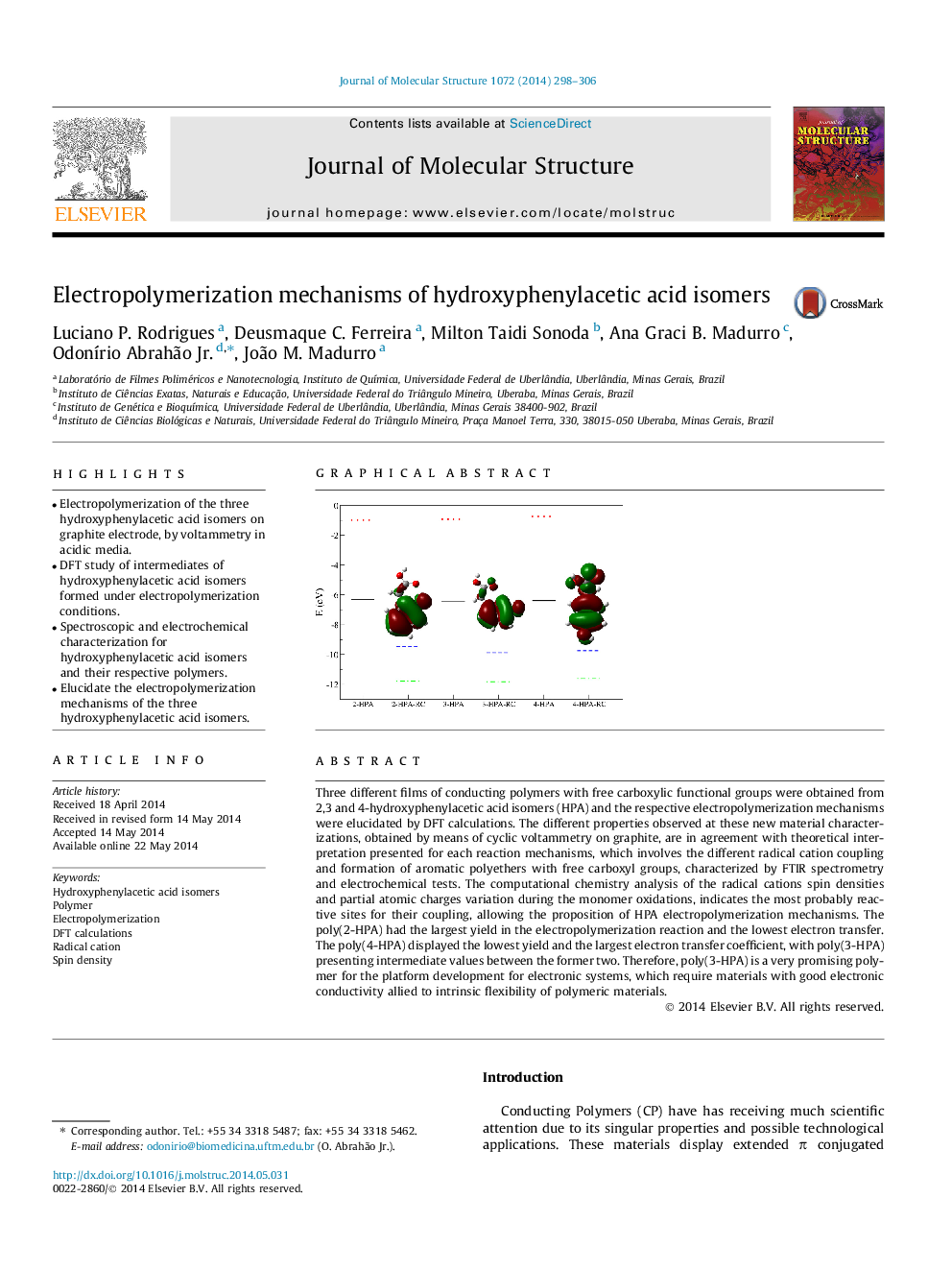| کد مقاله | کد نشریه | سال انتشار | مقاله انگلیسی | نسخه تمام متن |
|---|---|---|---|---|
| 1405055 | 1501745 | 2014 | 9 صفحه PDF | دانلود رایگان |
• Electropolymerization of the three hydroxyphenylacetic acid isomers on graphite electrode, by voltammetry in acidic media.
• DFT study of intermediates of hydroxyphenylacetic acid isomers formed under electropolymerization conditions.
• Spectroscopic and electrochemical characterization for hydroxyphenylacetic acid isomers and their respective polymers.
• Elucidate the electropolymerization mechanisms of the three hydroxyphenylacetic acid isomers.
Three different films of conducting polymers with free carboxylic functional groups were obtained from 2,3 and 4-hydroxyphenylacetic acid isomers (HPA) and the respective electropolymerization mechanisms were elucidated by DFT calculations. The different properties observed at these new material characterizations, obtained by means of cyclic voltammetry on graphite, are in agreement with theoretical interpretation presented for each reaction mechanisms, which involves the different radical cation coupling and formation of aromatic polyethers with free carboxyl groups, characterized by FTIR spectrometry and electrochemical tests. The computational chemistry analysis of the radical cations spin densities and partial atomic charges variation during the monomer oxidations, indicates the most probably reactive sites for their coupling, allowing the proposition of HPA electropolymerization mechanisms. The poly(2-HPA) had the largest yield in the electropolymerization reaction and the lowest electron transfer. The poly(4-HPA) displayed the lowest yield and the largest electron transfer coefficient, with poly(3-HPA) presenting intermediate values between the former two. Therefore, poly(3-HPA) is a very promising polymer for the platform development for electronic systems, which require materials with good electronic conductivity allied to intrinsic flexibility of polymeric materials.
Figure optionsDownload as PowerPoint slide
Journal: Journal of Molecular Structure - Volume 1072, 25 August 2014, Pages 298–306
